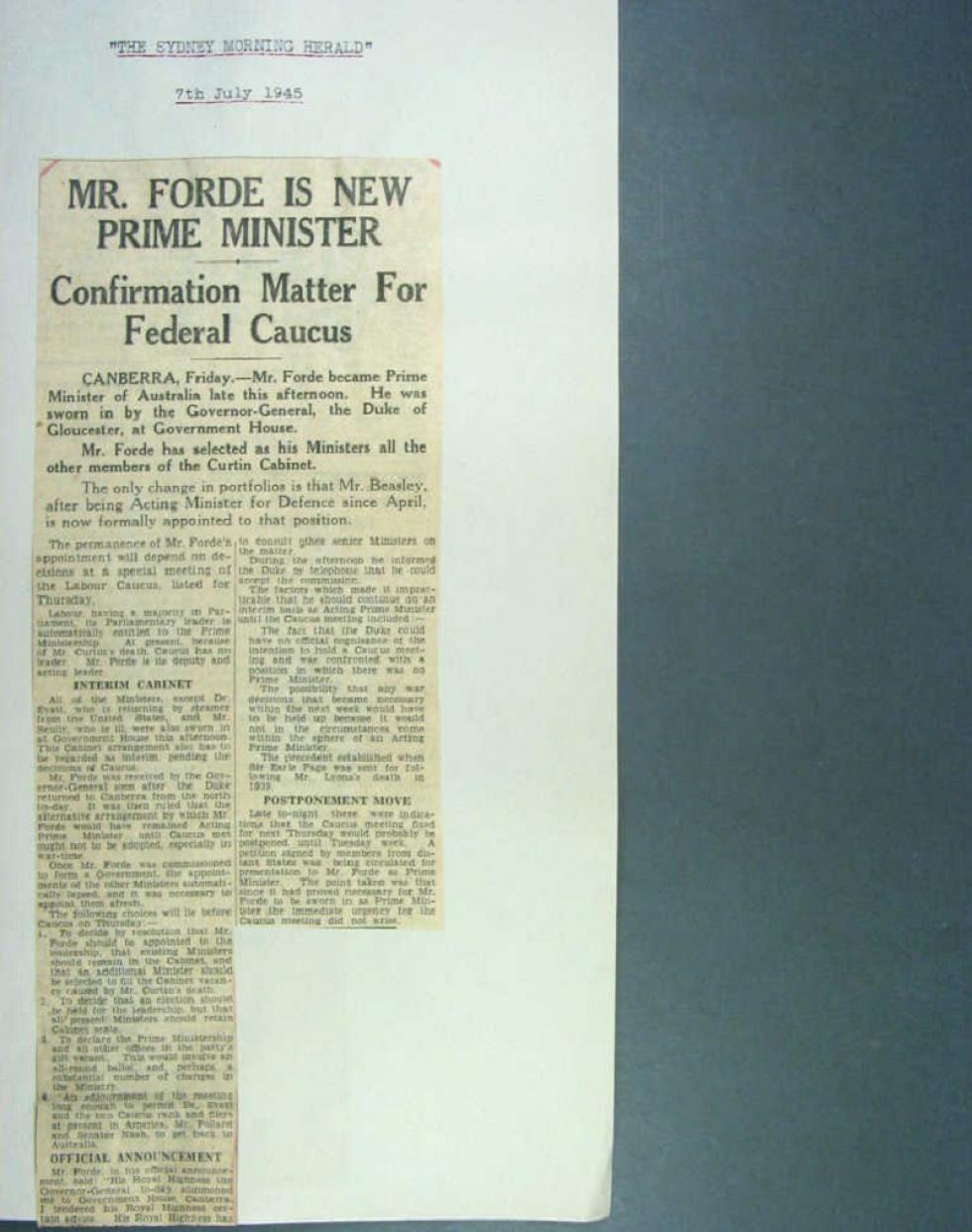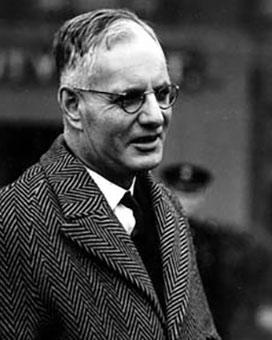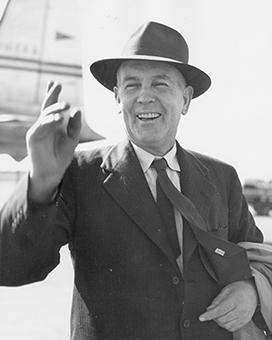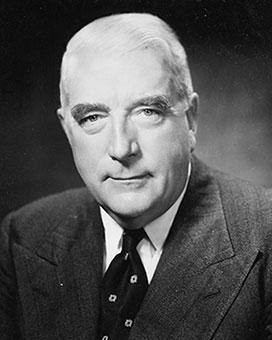Francis Michael (Frank) Forde was sworn in as Prime Minister on 6 July 1945, the day after the death of John Curtin. He held the position for only 8 days.

After the death of John Curtin, deputy Prime Minister Frank Forde became Prime Minister and continued as Minister for the Army. He held the top job for only 8 days. NAA: A5954, 2211/2, p. 36
The first days were devoted to ceremonial solemnity. In a brief parliamentary sitting on the afternoon of the day of Curtin’s death, Forde moved the motion of regret as acting Prime Minister. On the morning of Friday 6 July, he led the members of both Houses in procession past Curtin’s coffin at the lying in state in King’s Hall in Parliament House. That afternoon, Forde attended the memorial service at Parliament House and then went to Government House where he was sworn in as Prime Minister.
The following day, with Curtin’s friend and press secretary Don Rodgers, he flew to Perth with Elsie Curtin, in the Governor-General’s private aircraft, for the funeral on 8 July.
In the next days, Ben Chifley decided to stand for the party leadership and let Forde know his decision. Norman Makin also decided to stand, and on 11 July all 3 were busy with supporters, testing the numbers.
On the morning of 12 July, before Caucus met to elect Curtin’s successor, the outcome was clear. Forde’s last action as Prime Minister was to accept defeat. He called straight-talking parliamentarian Les Haylen to his office and asked what the outcome would be. Haylen described Forde’s reaction:
His face went deathly white, the veins on his neck stood out in an effort to suppress his emotions . . . after a while he said, ‘I must say a little prayer for Ben. It’s not an easy job’.
Forde maintained this ‘dignity and humility’ when the vote was taken, and became once more deputy leader.
Sources
- McMullin, Ross, The Light on the Hill: The Australian Labor Party, 1891–1991, Oxford University Press, Melbourne, 1991.
From the National Archives of Australia collection
- NAA: A461, A24/1/3
- NAA: A5954, 1947/10





